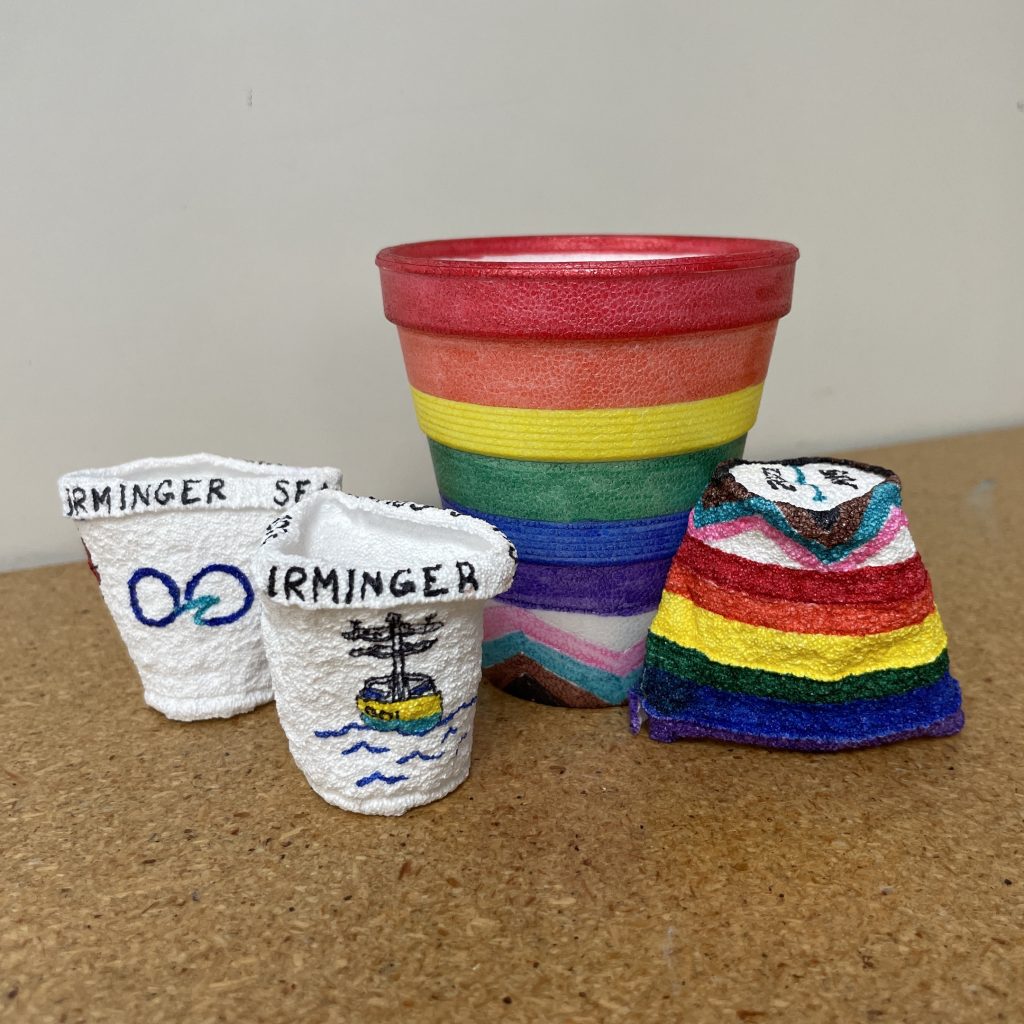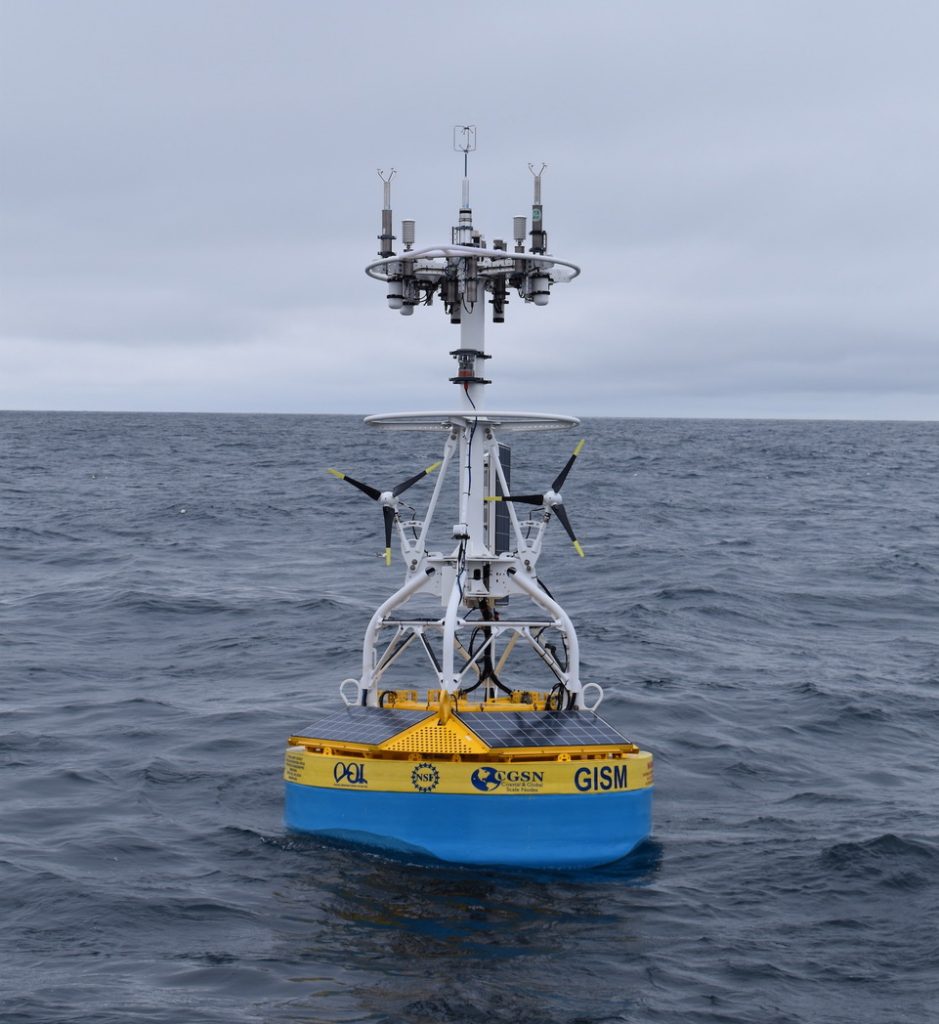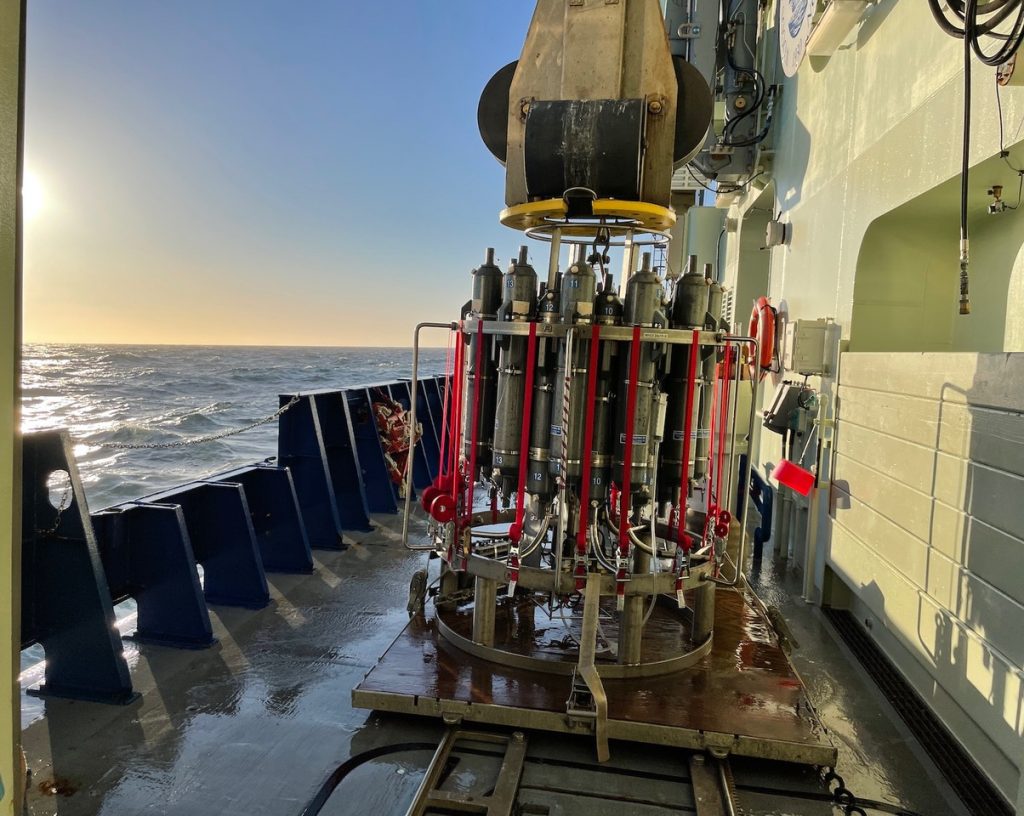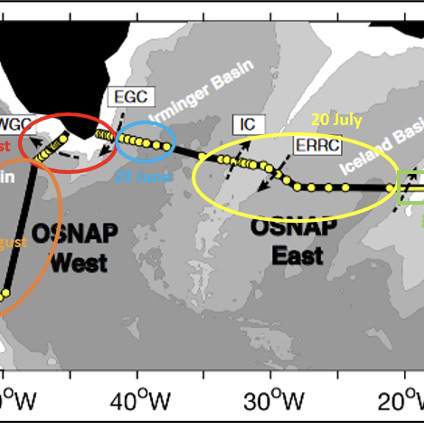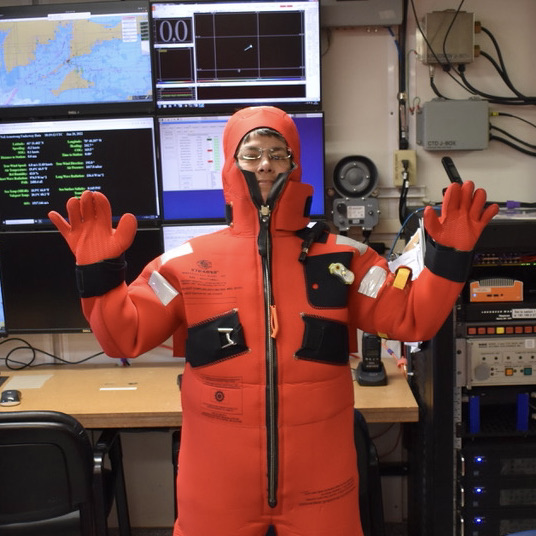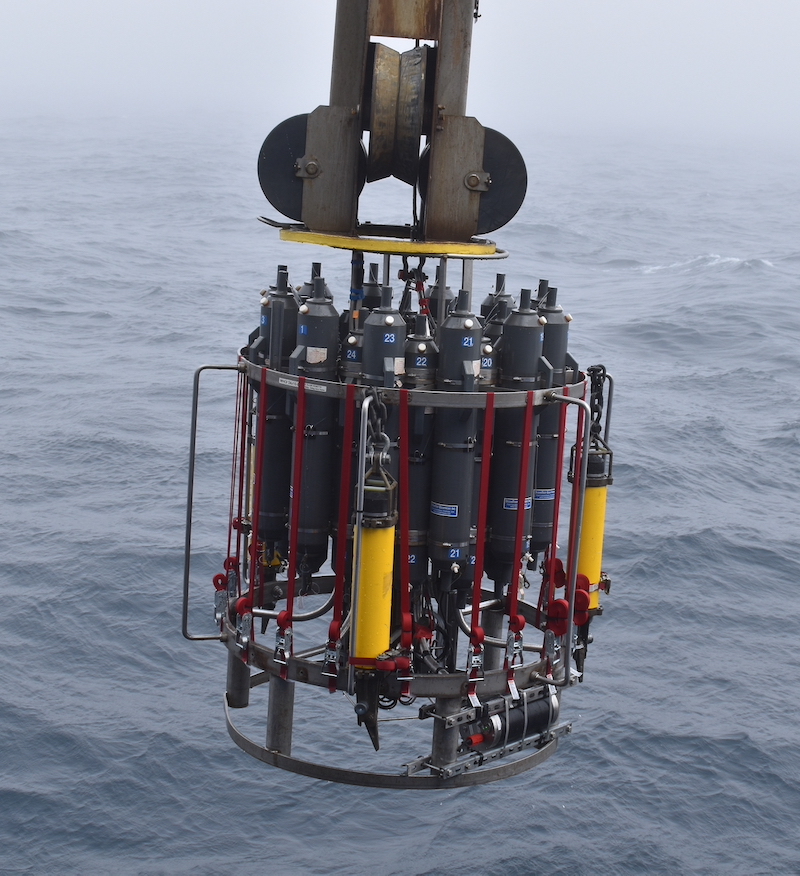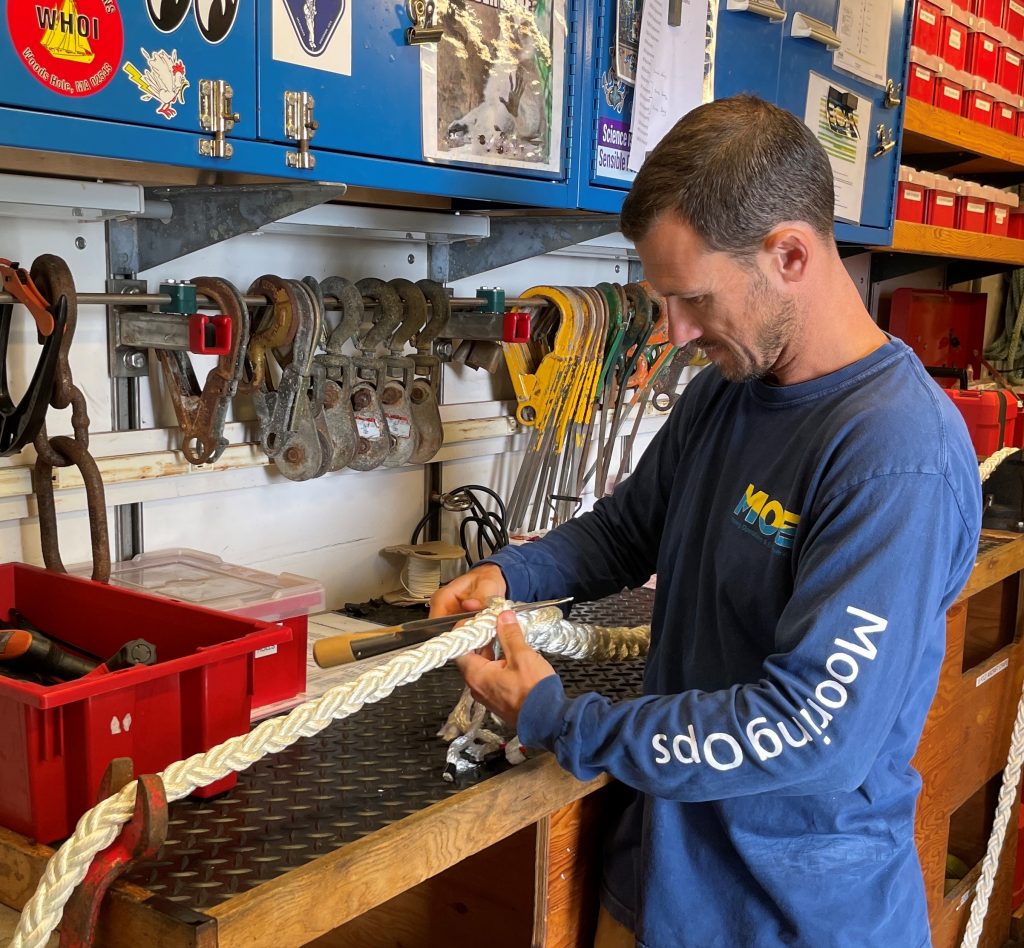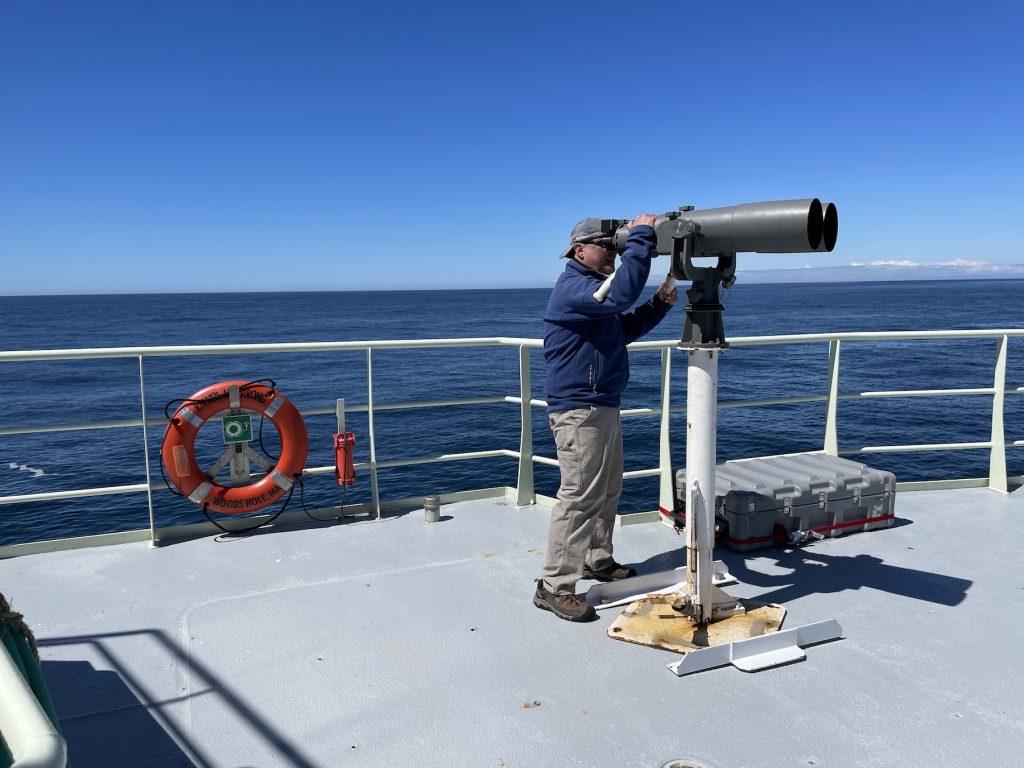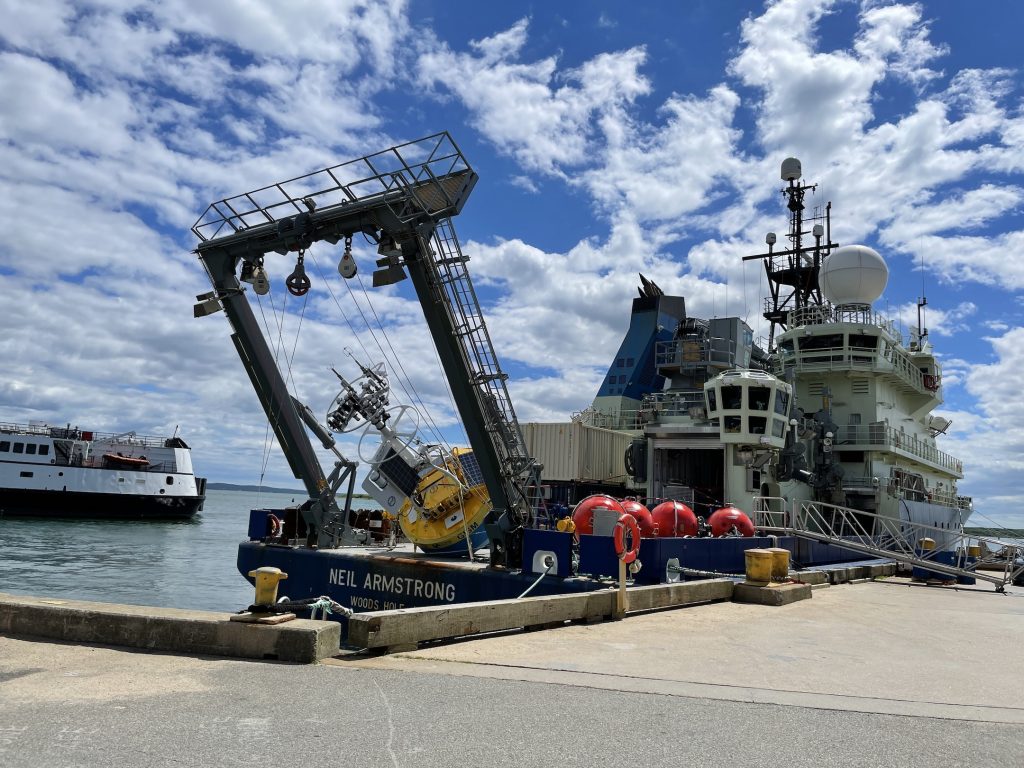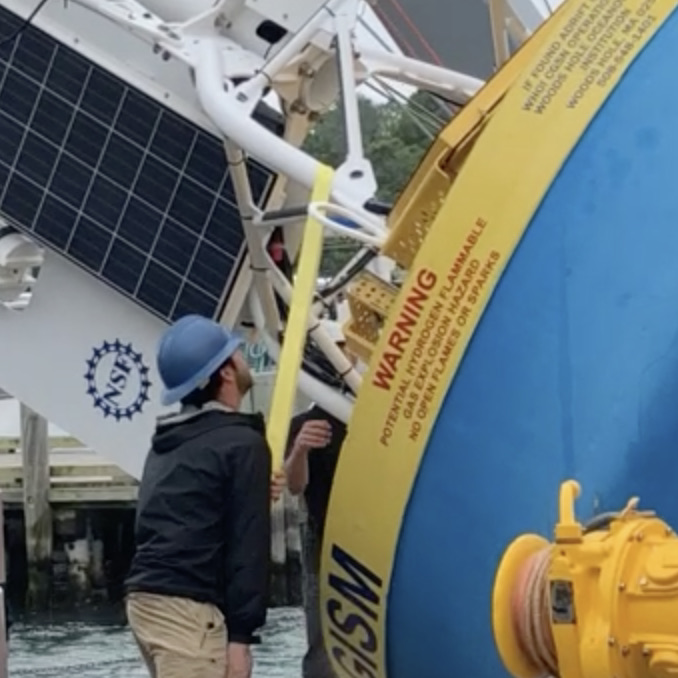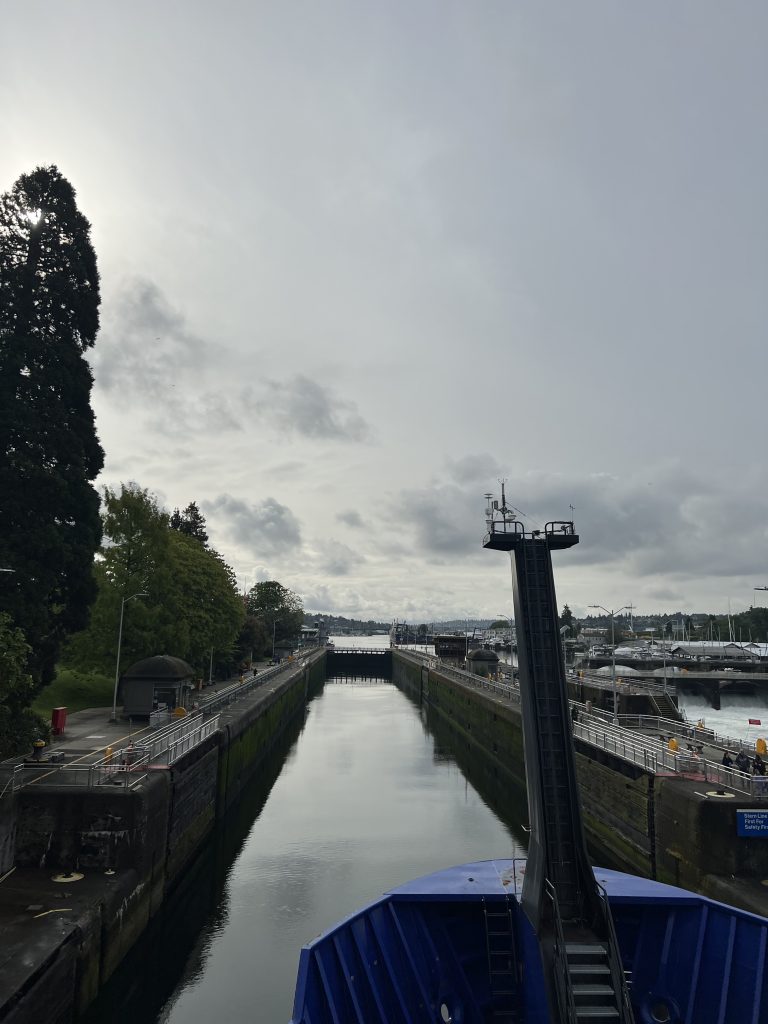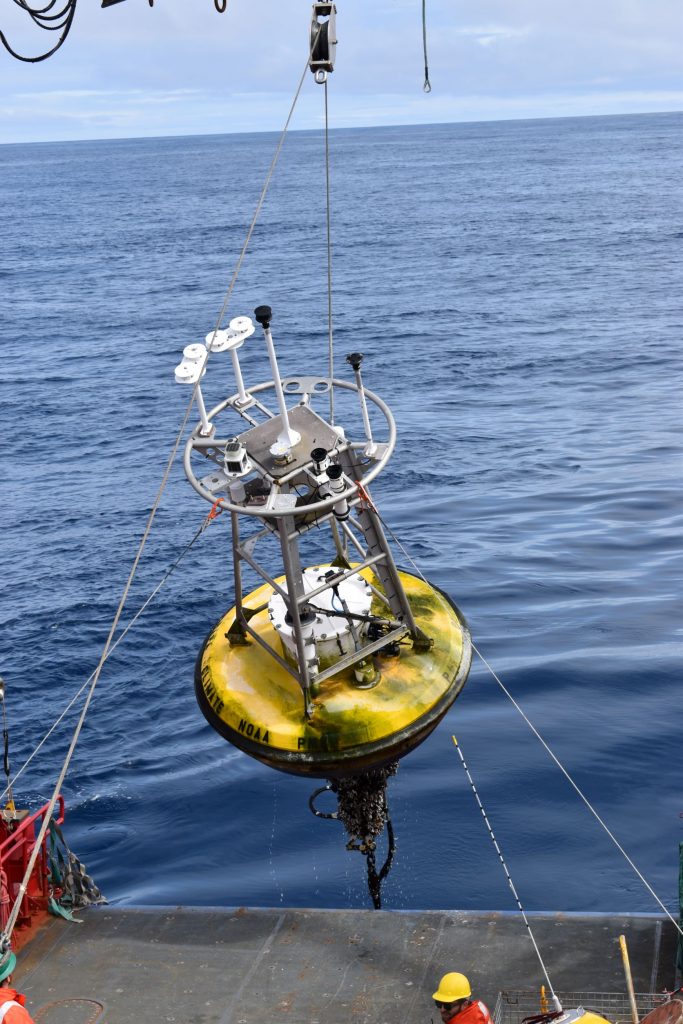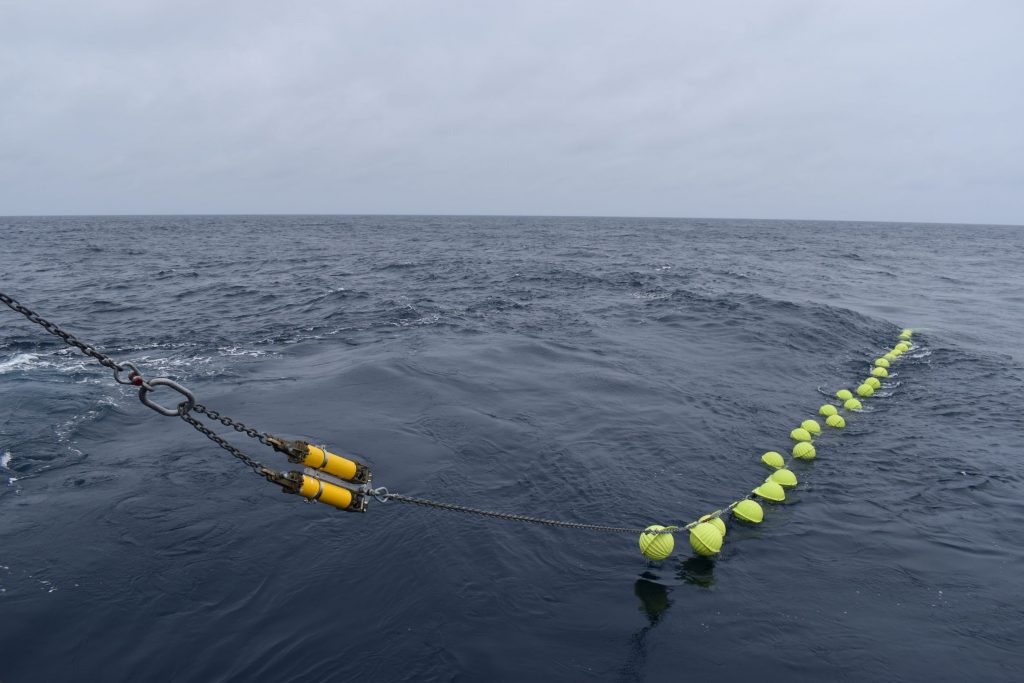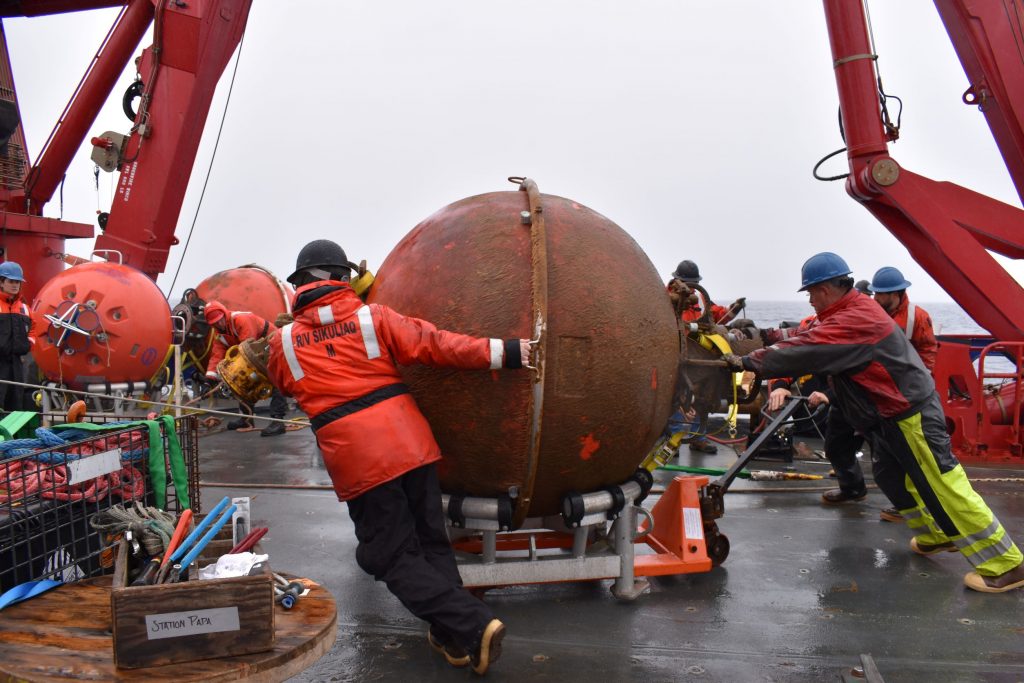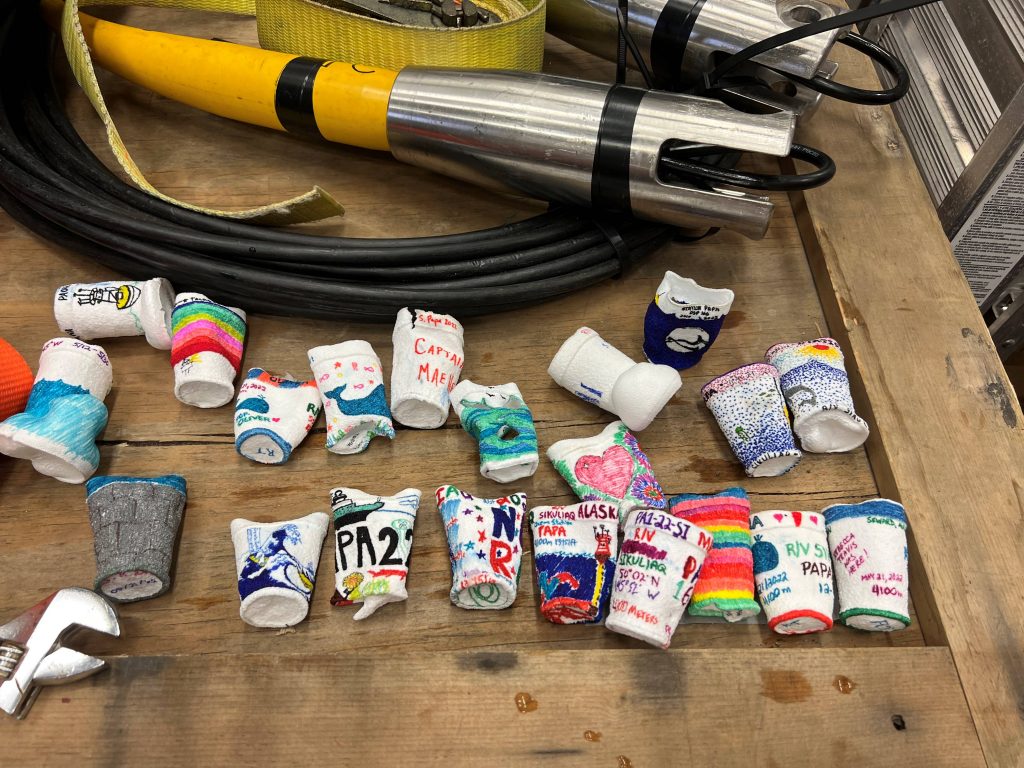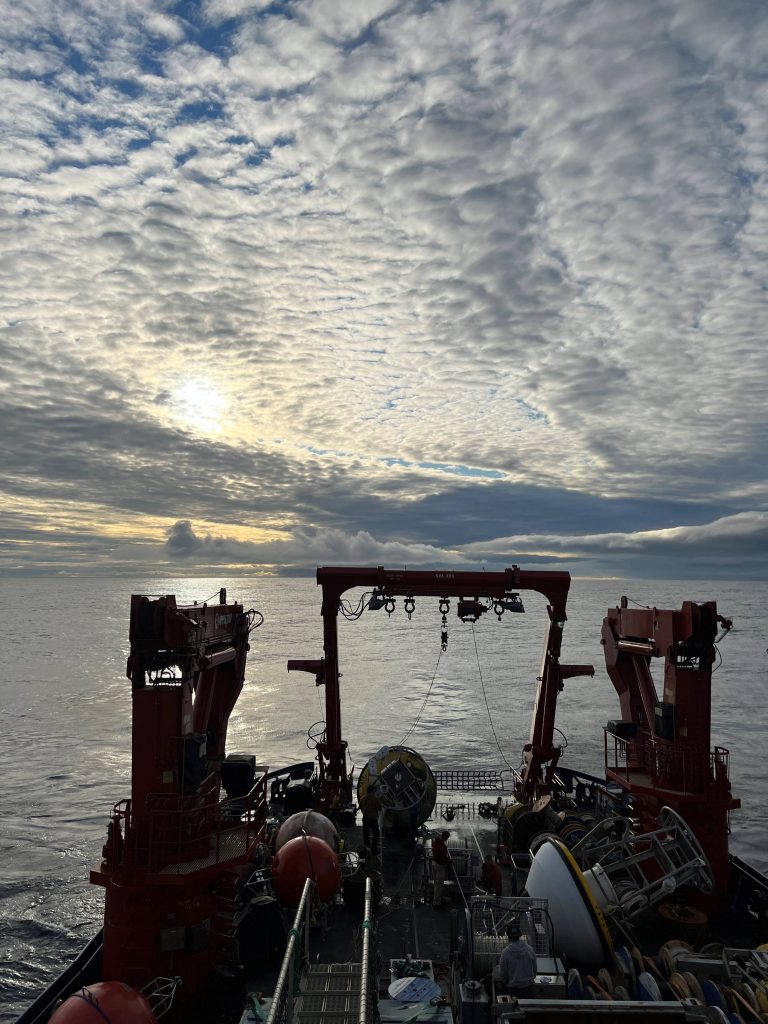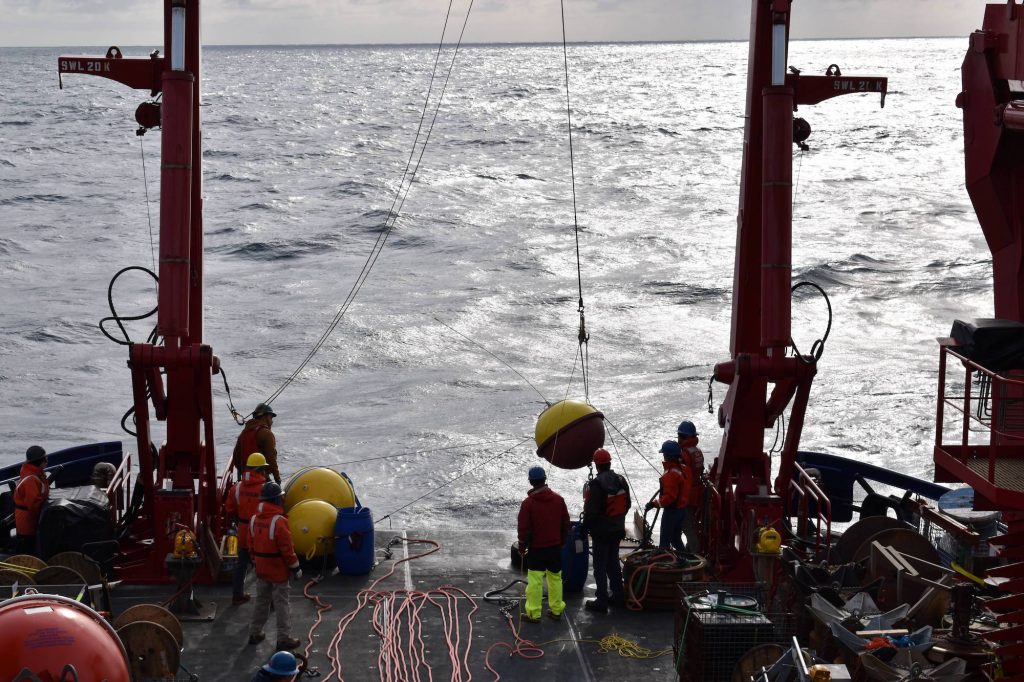- All
- Endurance 16
- Endurance 17
- Endurance 18
- Endurance 19
- Endurance 20
- Endurance 21
- Endurance 22
- Endurance 23
- Irminger 10
- Irminger 11
- Irminger 12
- Irminger 9
- Pioneer 17
- Pioneer 18
- Pioneer 19
- Pioneer 21
- Pioneer 22
- Pioneer MAB At-Sea Tests
- Pioneer MAB Initial Deployment
- Pioneer MAB Test Deployment
- RCA VISIONS 22
- RCA VISIONS 23
- RCA VISIONS 24
- RCA VISIONS 25
- Station Papa 10
- Station Papa 11
- Station Papa 12
- Station Papa 9
Pressure effects
Although the team on the Irminger Sea 9 cruise is working hard every day – including weekends and holidays – they do try to throw…
First mooring deployed
After eight days transiting from Woods Hole to the Irminger Sea, the team is happy to be there and ready to get to work. The…
Light skies
The Irminger Sea Array is at ~60° N latitude, and we are just after the summer solstice. That means it doesn’t get very dark here….
Link to OSNAP blog
A team from OSNAP (Overturning in the Subpolar North Atlantic Program) is also onboard the Armstrong, working alongside OOI colleagues. The OSNAP team is conducting…
Survival suits
All UNOLS (University-National Oceanographic Laboratory System) ships have safety briefings and drills with the science party to ensure that everyone is prepared for emergencies at…
Changing conditions
During our transit we are periodically stopping to conduct CTD casts in the Labrador Sea. We use these casts to test components and instruments that…
Splicing operation
The Surface Mooring consists of a surface buoy, a seafloor anchor, and a mooring riser connecting the two. The riser is made up of numerous…
Month-long expedition
The R/V Neil Armstrong, operated by the Woods Hole Oceanographic Institution, is loaded and ready for departure for a month-long expedition that includes an eight-day…
Surface mooring ready
Deck Ops Lead Chris Basque secures the Irminger Surface Mooring as loading of the R/V Neil Armstrong continues for this year’s trip north to recover…
Global Station Papa
The Global Station Papa Array is located in the Gulf of Alaska next to the NOAA Pacific Marine Environmental Laboratory (PMEL) Surface Buoy. The region is extremely vulnerable to ocean acidification, has a productive fishery, and low eddy variability. It is impacted by the Pacific Decadal Oscillation and adds to a broader suite of OOI and other observatory sites in the Northeast Pacific.
Mobilization begins
The surface mooring of the Global Irminger Sea Array was tipped and loaded onto a flatbed truck for its trip down narrow, winding roads to…
Landed in Seattle
And they are back! After 19 days, and successful completion of six mooring deployment/recoveries, the Station Papa 9 team aboard the R/V Sikuliaq arrived in…
More curious visitors
We may be interested in the ocean, but sometimes the ocean is interested in us! The Station Papa 9 cruise had some inquisitive visitors this…
Biofouled buoy
NOAA was also onboard the R/V Sikuliaq to turn their surface mooring. OOI is always happy to collaborate with other scientists and institutions! After a…
Components are key
The subsurface moorings at Station Papa have various components that are all important for the collection of scientific data. The orange spheres provide buoyancy…
Mooring recovery
Recovery of the old moorings is extremely important to the OOI program. Even though OOI telemeters data in near real-time, there can be gaps. When…
Before and After
Station Papa 9 team members spent some time during transit decorating Styrofoam cups, which were later placed in a CTD rosette. The CTD Rosette,…
Cloud Cover
The clouds rolled in as the sun set as the R/V Sikuliauq headed Headed to re-deploy the NOAA PMEL surface mooring.
Measuring waves
The sun was shining and the waves rolling as the University of Washington Applied Physics Lab’s Waverider was deployed. The waverider measurements provide a…
